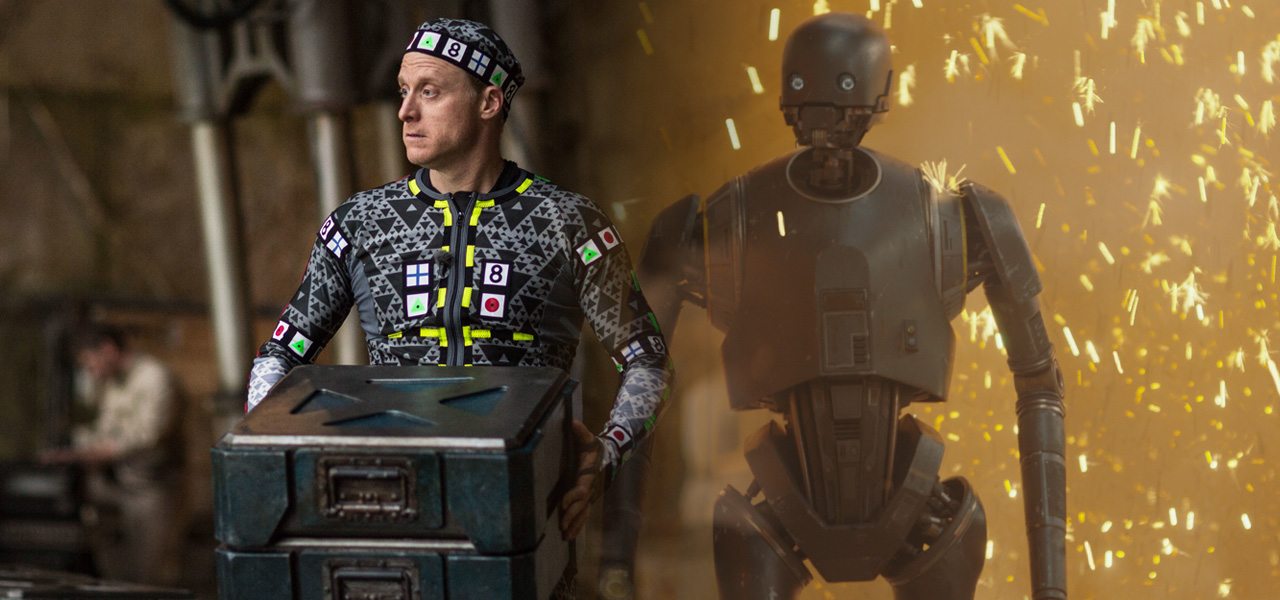
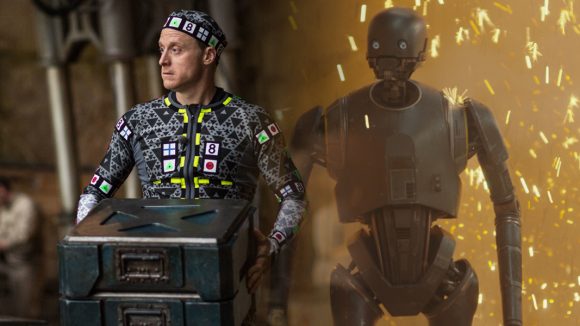
ILM Animation Supervisor Hal Hickel Explains How To Add Personality To A Star Wars Droid
It’s hard not to love K-2SO, the sassy security droid in Rogue One. He’s easily the biggest scene stealer in the film, much like C-3PO, R2-D2, and BB-8 in the other Star Wars movies.
Which makes the way K-2SO was brought to life even more impressive. The droid was performed on set by actor Alan Tudyk in a gray marker suit, as well as via motion capture, and then animated in cg by Industrial Light & Magic.
But what else gave K-2SO his distinctive personality? Cartoon Brew talked to ILM animation supervisor Hal Hickel about finding the droid’s inner essence by letting Tudyk experiment with a digital marionette of himself, using ILM’s capture suit, and accentuating the eyes for a final performance.
K-2SO: Not just another droid
The first observation Hickel makes about K-2SO is that the droid is particularly ‘unflappable.’ That’s vastly different to C-3PO, for instance, who was very flappable. But K-2SO’s sarcasm and wit are a big part of his character. This came from the things the droid says as well as his physical expression, something other droids in the Star Wars universe don’t always have.
“Even the more anthropomorphized droids like C-3PO, they don’t have mouths that smile or frown or eyebrows that move up or down or any of that kind of thing,” said Hickel. “It’s actually one of the things I’ve always loved about the Star Wars design aesthetic is that it’s very sort of industrial and practical and to me it feels very real because of that.”
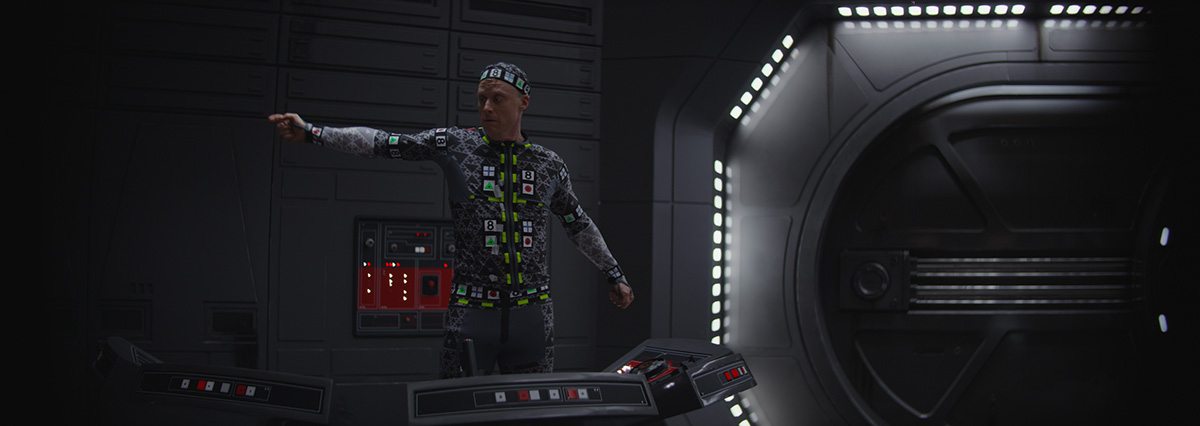
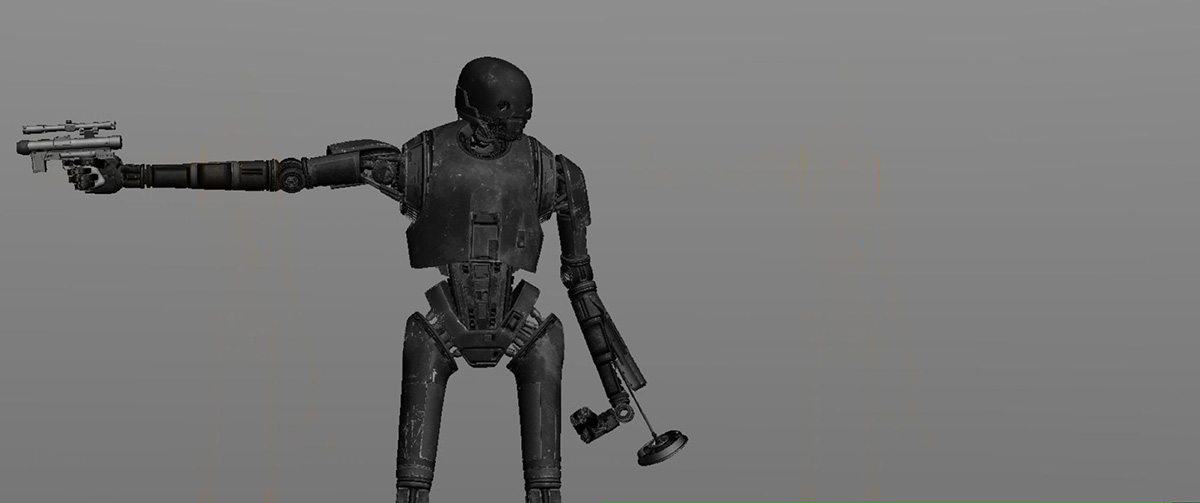
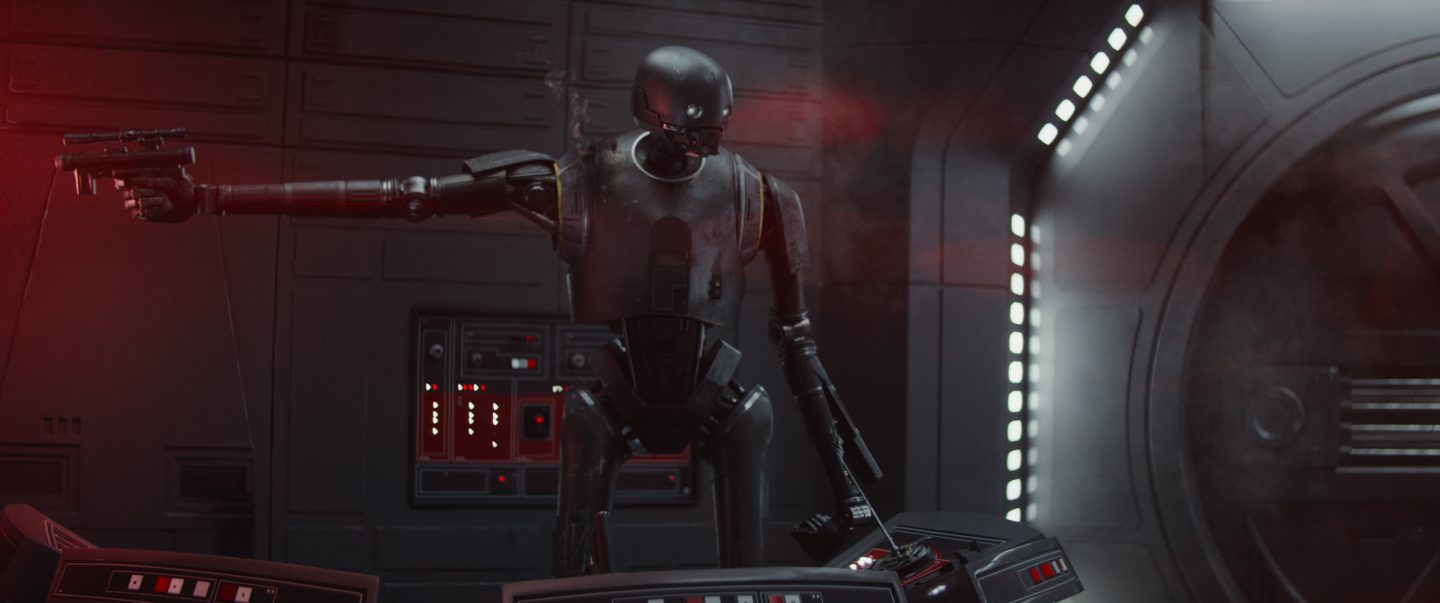
So how could more expression be infused into K-2SO, which was actually a re-programmed Empire robot? The answer lay in the droid’s eyes, which moved more than most Star Wars droids do. Still, that required some testing first by ILM, as Hickel explains.
“We tried some things with K2’s face including eyes that could blink with little metal shutters that you could rationalize were there to protect his eyes from dust, but that seemed to be a step too far. What we did preserve, though, was the ability to rotate his eyes, which other droids really haven’t had in the Star Wars universe. That gave you little thinking moments where the eyes are kind of bouncing around a little bit and doing those little micro-movements that we see human eyes doing. So that gave him an extra level of expressiveness.”
Inhabiting K-2: Alan Tudyk
Tudyk is the voice of K-2SO and the droid’s on-set performer. Hickel says the actor, who has played robots before in I, Robot and Big Hero 6, brought so much to the character.
“He’s super funny, he’s got amazing comic timing, and he came up with this great voice that to me sounded like a mix of kind of Hal 9000 and Marvin the Paranoid Android,” said Hickel. “And that all seemed to mesh really well with K-2’s design. The droid is seven feet tall, but he’s kind of hulking, his head sits a little bit low relative to his shoulders – not hunchback exactly but it just kind of gives him a big sort of hulking feel, and that, coupled with Alan’s voice, just really brought the character alive.”
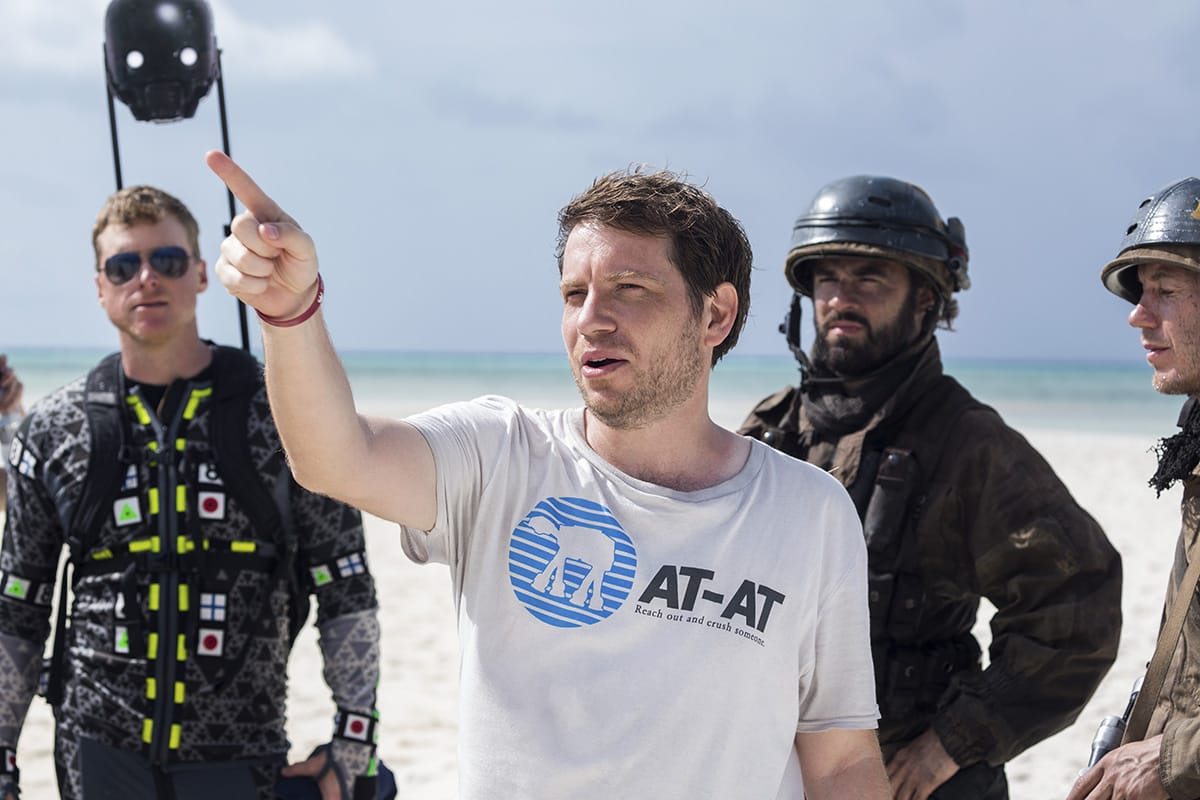
Early on, Tudyk paid a visit to ILM’s studio in San Francisco to experiment with the performance. Special make-up effects supervisor Neal Scanlan and his team had developed leg extension stilts for the actor to wear in order to reach the correct height for eye lines and other interactions, as well as to give him the correct long-legged gait when he walked. The early visit was designed to ‘test drive’ the eventual performance and animation.
“Alan had these stilts on in our motion capture stage,” described Hickel, “and we had monitors around and if he looked at the monitors, these big flat screens, he could see himself rendered as K-2, sort of like a magic mirror. It was like an actor trying on a costume and looking at themselves to see what looks good and what poses look good and how they can present themselves to get the best effects in the costume, how much to swing the arms and things like that.”
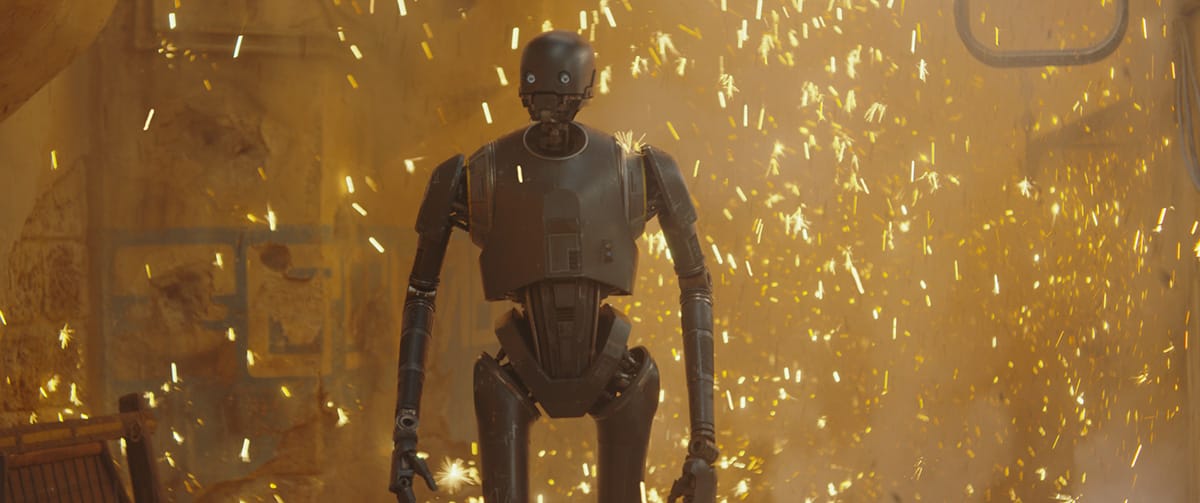
Capturing K-2 on location
Later on set, Tudyk wore ILM’s patented iMocap suit – a gray suit with triangle tracking markers that has been in constant development and refinement ever since the second Pirates of the Caribbean film for which ILM crafted Davy Jones and his crew. The idea with the suit is not for pure motion capture data, but something that enables a degree of camera tracking in a flexible way on set.
“What we usually have on set are just two witness cameras which are high-definition video cameras that we can just pop into the shot wherever there’s a clear view to the actor,” said Hickel. “We generally wait until just before they start shooting because lights are being tweaked and flags and bounce cards are being brought in. And so between those two witness cameras and any of the main filming cameras we can triangulate the actor’s movements later on and extract the data and use it for animation.”
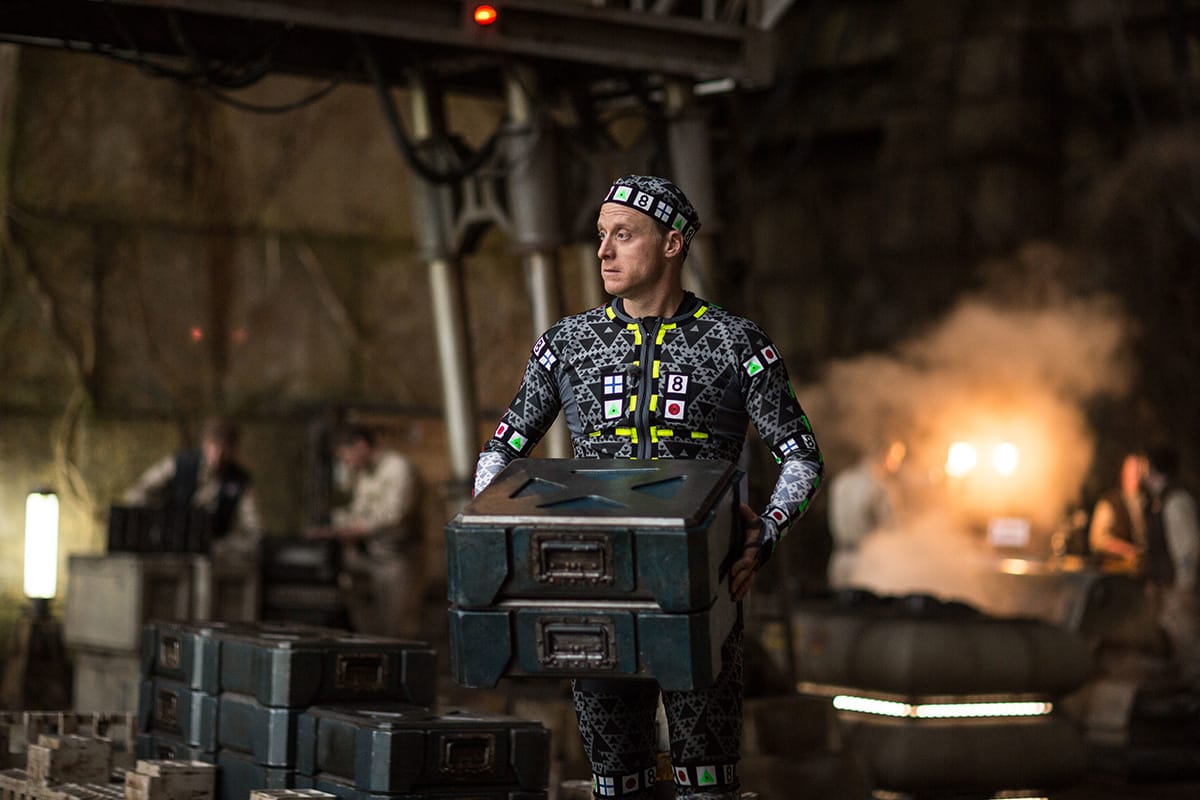
“It’s more work to get the motion that way than it would be on a traditional motion capture stage,” added Hickel, “but the advantage is the actor’s there with all the other actors and the magic is sort of happening on set where it really ought to happen rather than asking Alan to do the scene on his own with someone just shouting lines to him off-camera.”
The final performance
Of course, the motion captured and iMocap’d performance of Tudyk was not the final stage of K-2SO’s animation. ILM’s artists had a heavy hand in delivering the final robot action. “Part of that is technical, in a way,” said Hickel, “in that K-2’s posture and his proportions are a bit different from Alan’s, and so there’s just some tweaking that we do to kind of get Alan’s motion to fit well onto K-2.”
The smaller details came with adding in the droid’s expressive facial and body movements. Much of the time, suggests Hickel, Tudyk’s comic timing remained in K-2’s final animated performance but it may have come from different parts of the acting on the day. The eye darts were one area given particular attention.
“We weren’t tracking Alan’s eyes so that was just a matter of the animator studying the footage of Alan and looking for those little thinking moments and those little telltale movements of the eyes as they flick from one eye line to another,” said Hickel. “Or where they do that little thinking thing where they tick around back and forth. All that is about is making sure that what Alan was communicating with his body, what he was doing on set, is being accurately translated into K-2 and communicated by K-2.”

.png)